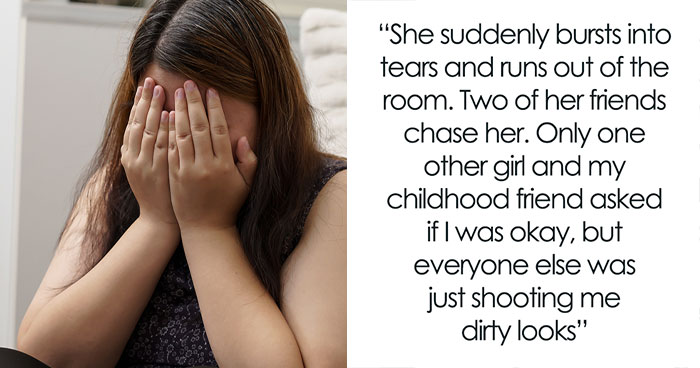
16Kviews
2024 Wildlife Photographer Of The Year: 15 Best Pics As Announced By Natural History Museum
InterviewThe winners of the 2024 Wildlife Photographer of the Year competition, organized by the Natural History Museum, have been announced. From a record-breaking 59,228 entries submitted by photographers from 117 countries and territories, we’ve compiled a list of the top 15 images selected by the competition’s jury.
Shane Gross, a Canadian marine conservation photojournalist, was named Wildlife Photographer of the Year 2024 for his stunning image ‘The Swarm of Life,’ which captures the mesmerizing underwater world of western toad tadpoles.
An exhibition featuring the 100 winning images will be open at the Natural History Museum in London until June 29, 2025.
More info: nhm.ac.uk | Facebook | x.com | youtube.com | Instagram
This post may include affiliate links.
Winner, Wetlands: The Bigger Picture: The Swarm Of Life By Shane Gross, Canada
Shane Gross looks under the surface layer of lily pads as a mass of western toad tadpoles swim past.
Shane snorkelled in the lake for several hours, through carpets of lily pads. This prevented any disturbance of the fine layers of silt and algae covering the lake bottom, which would have reduced visibility.
Western toad tadpoles swim up from the safer depths of the lake, dodging predators and trying to reach the shallows, where they can feed. The tadpoles start becoming toads between four and 12 weeks after hatching. An estimated 99% will not survive to adulthood.
Bored Panda reached out to Shane Gross, the photographer behind the winning image titled ‘The Swarm of Life,’ which was awarded Wildlife Photographer of the Year 2024, and asked him some questions about this spectacular shot.
We were curious about what initially sparked the Canadian photographer's interest in photographing wetlands and their often-overlooked inhabitants. Here’s what we learned: “I first thought it was a beautiful, photogenic environment. Then I considered how in peril these places and species are and was filled with a sense of urgency.”
Winner, Animals In Their Environment: Frontier Of The Lynx By Igor Metelskiy, Russia
Igor Metelskiy shows a lynx stretching in the early evening sunshine, its body mirroring the undulating wilderness.
The remote location and changing weather conditions made access to this spot– and transporting equipment there – a challenge. Igor positioned his camera trap near the footprints of potential prey.
It took more than six months of waiting to achieve this relaxed image of the elusive lynx. A survey carried out in 2013 estimated the entire Russian lynx population was around 22,500 individuals, with numbers for the Russian Far East, including those in Primorsky Krai, at 5,890.
Winner, Animal Portraits: On Watch By John E Marriott, Canada
John E Marriott frames a lynx resting, with its fully grown young sheltering from the cold wind behind it.
John had been tracking this family group for almost a week, wearing snowshoes and carrying light camera gear to make his way through snowy forests. When fresh tracks led him to the group, he kept his distance to make sure he didn’t disturb them.
Lynx numbers usually reflect the natural population fluctuations of their main prey species, the snowshoe hare. With climate change reducing snow coverage, giving other predators more opportunities to hunt the hares, hare populations may decline, in turn affecting the lynx population.
Shane also shared with us the challenges he faced during several hours of snorkeling in such an intricate environment while capturing his award-winning image: “Firstly, it was chilly, so just staying warm was a challenge. Then the visibility wasn't all that good so I needed to get close to everything, both the foreground (the tadpoles) and the background (the lily pads) all while not touching the lakebed or lily pad stems as they were covered with fine algae and silt which would make the visibility even worse. Then I tried to highlight the dark subjects so they would pop against the bright background. But in all honesty, it was a fun challenge. I never got frustrated, in fact quite the opposite, I was in heaven!”
Winner, Behaviour: Birds: Practice Makes Perfect By Jack Zhi, USA
Jack Zhi enjoys watching a young falcon practicing its hunting skills on a butterfly, above its sea-cliff nest.
Jack has been visiting this area for the past eight years, observing the constant presence of one of the birds and photographing the chicks. On this day it was a challenge to track the action because the birds were so fast.
Should this young peregrine falcon make it to adulthood, tests have shown it will be capable of stooping or dropping down on its prey from above, at speed of more than 300 kilometres per hour (186 miles per hour).
Winner, Behaviour: Amphibians And Reptiles: Wetland Wrestle By Karine Aigner, USA
Karine Aigner recognises the skin of a yellow anaconda as it coils itself around the snout of a yacaré caiman.
The tour group Karine was leading had stopped to photograph some marsh deer when she noticed an odd shape floating in the water. Through binoculars, Karine quickly recognised the reptiles and watched as they struggled with each other.
Caimans are generalist feeders and will eat snakes. As anacondas get larger, they will include reptiles in their diet. It’s hard to determine who is the aggressor here. On the snake’s back are two tabanids, blood-sucking horsefliesthat are known to target reptiles.
When asked about the most surprising moment during this particular shoot, the photographer shared his experience capturing the moment: “I loved that the tadpoles would swarm me if I floated still. They would start nibbling on me and my camera. When they nibbled on my bare skin (basically just my hands) it really tickled and made me laugh. They are so cute!”
Lastly, we wanted to know what, in Gross' opinion, the photograph reveals about the interconnectedness of life in wetland ecosystems. Shane kindly shared with us: “I hope it shows that when a place is left alone it has a chance to be spectacularly full of life. As we start to remove or pollute a place it is diminished. I hope it inspires others to advocate for lakes, ponds, and even small vernal pools near them.”
Winner, Behaviour: Mammals: Tranquil Moment By Hikkaduwa Liyanage Prasantha Vinod, Sri Lanka
Hikkaduwa Liyanage Prasantha Vinod finds this serene scene of a young toque macaque sleeping in an adult’s arms.
Resting in a quiet place after a morning of photographing birds and leopards, Vinod soon realised he wasn’t alone. A troop of toque macaques was moving through the trees above. Vinod spotted this young monkey sleeping between feeds and used a telephoto lens to frame the peaceful moment.
Toque macaques easily adapt to human foods, and the encroachment of plants into their habitat has seen an increase in incidents of shooting, snaring and poisoning by farmers trying to preserve their crops.
Winner, Behaviour: Invertebrates: The Demolition Squad By Ingo Arndt, Germany
Ingo Arndt documents the efficient dismemberment of a blue ground beetle by wood ants.‘Full of ant’ is how Ingo described himself after lying next to the ants’ nest for just a few minutes. Ingo watched as the red wood ants carved an already dead beetle into pieces small enough to fit through the entrance to their nest.
Much of the red wood ants’ nourishment comes from honeydew secreted by aphids, but they also need protein. They are capable of killing insects and other invertebrates much larger than themselves through sheer strength in numbers.
Epic Battle (or it would be if the beetle wasn't dead already...)
We also contacted Robin Darius Conz, the author of the award-winning image featuring a tiger overlooking a protected area in the Western Ghats. We asked him several questions to gain more insight into his work and the process of capturing this remarkable photograph.
The photographer kindly described the moment when he encountered the tiger against the backdrop of the town: „While out in the field shooting for a documentary based on the Nilgiri Mountains, we had a moment when a female tigress walked along the slope of a hill near the town.
Winner, Urban Wildlife: Tiger In Town By Robin Darius Conz, Germany
Robin Darius Conz watches a tiger on a hillside against the backdrop of a town where forests once grew.
Robin was following this tiger as part of a documentary team filming the wildlife of the Western Ghats. On this day, he used a drone to watch the tiger explore its territory before it settled in this spot.
The protected areas in the Western Ghats, where tigers are carefully monitored, are some of the most biodiverse landscapes in India and have a stable population of tigers. Outside these areas, where development has created conflict between humans and wildlife, tiger occupancy has declined.
Winner, Photojournalist Story Award: Dolphins Of The Forest By Thomas Peschak, Germany/South Africa
‘Among the Trees’
The Amazon river dolphin is one of two freshwater dolphin species living in the Amazon and Orinoco basins. Only this species has evolved to explore the seasonally flooded forest habitat.
We observed her for about two hours. As the sun was setting and clouds were rolling in, she found the ideal resting spot. The glow from the village lights in the background highlighted the mystery of the location and the lack of distinction between human habitat and that of wild animals. My initial thought was that it was a stunning situation, with all the elements falling into place, and I aimed to capture as many images as possible without disturbing or troubling her.”
When asked about the challenges he faced in using a drone to film such an elusive and powerful animal, the photographer revealed: „In order to maintain natural behavior, it is imperative to keep a good distance while getting these aerial shots. It’s also important to spend some time observing, letting them get used to it, and very soon, the animals—in this case, the tigress—could be least bothered by the presence of the flying object. In the fast-fading light of dusk, I managed to get a few images of her sitting relaxed on the shoulder of the hill.”
Winner, 10 Years And Under: Free As A Bird By Alberto Román Gómez, Spain
Alberto Román Gómez contrasts a delicate stonechat bird with a hefty chain.
Watching from the window of his father’s car at the edge of the Sierra deGrazalema Natural Park, Alberto found this young bird tricky to photograph as it was quickly flying back and forth, gathering insects. To Alberto, the stonechat displayed a sense of ownership, as if it were a young guardian overseeing its territory.
This young bird has not yet developed its adult call, which sounds like two stones tapped together. Stonechats tend to prefer open habitats and typically perch on fences.
Winner, Photojournalism: Dusting For New Evidence By Britta Jaschinski, Germany/UK
Britta Jaschinski looks on as a crime scene investigator from London’sMetropolitan Police dusts for prints on a confiscated tusk.
Britta spent time at the CITES Border Force department where confiscated animal products are tested. Newly developed magnetic powder allows experts to obtain fingerprints from ivory up to 28 days after it was touched, increasing the chances of identifying those involved in its illegal trade.
The International Fund for Animal Welfare has distributed more than 200 specially created kits to border forces from 40 countries. They have been instrumental in four cases that resulted in 15 arrests.
We were also curious about how long Conz and his team followed the tiger that was eventually captured in the photo, and whether they observed any interesting behavioral patterns during their time documenting it. Here's what we discovered: „Our project on the Nilgiris took about two years to complete. We saw her regularly patrolling her habitat, and it was only a matter of time before she returned to the hillside.”
Lastly, the award-winning photographer shared with us the impact he hopes his image will have on viewers, particularly in raising awareness about habitat loss and human encroachment: „The hope that I have for this image is that its story tells the reality of our proximity to wild animals and how inclusive we need to be with our wildlife. There’s no distinct boundary between what’s theirs and what’s ours and this image shows the blurred boundaries that animals live in and I hope this image goes on to inspire more public-private partnerships in conserving our wilderness.”
Winner, Impact Award: Hope For The Ninu By Jannico Kelk, Australia
Jannico Kelk illuminates a ninu, with the wire grass and shrubs behind it providing a frame against the darkness.
Jannico spent each morning walking the sand dunes of a conservation reserve, searching for footprints that this rabbit-sized marsupial may have left the night before. Finding tracks near a burrow, he set up his camera trap.
The greater Bilby has many Aboriginal names, including ninu. It was brought to near extinction through predation by introduced foxes and cats. Within fenced reserves where many predators have been eradicated, the bilby is thriving.
Winner, Impact Award: Recording By Hand By Liwia Pawłowska, Poland
Liwia Pawłowska watches as a relaxed common whitethroat is gently held by a bird ringer.
Liwia is fascinated by bird ringing and has been photographing ringing sessions since she was nine. She says that she hopes her photograph ‘helps others to get to know this topic better.’
Volunteers can assist trained staff at bird-ringing sessions, where a bird’s length, sex, condition and age are recorded. Data collected helps scientists to monitor populations and track migratory patterns, aiding conservation efforts.
"Hey! Are you writing my weight?! I just had some nice grub! Could you take away 2 grams?!" (just my first thought of the bird 🙃 )
Winner, Underwater: Under The Waterline By Matthew Smith, UK/Australia
Matthew Smith carefully photographs a curious leopard seal beneath the Antarctica ice.
Matthew used a specially made extension he designed for the front of his underwater housing to get this split image. It was his first encounter with a leopard seal. The young seal made several close, curious passes. ‘When it looked straight into the lens barrel, I knew I had something good.’
Though leopard seals are widespread and abundant, overfishing, retreating sea ice and warming waters mean that krill and penguins – their main food sources– are both in decline.
Winner, 15-17 Years: Life Under Dead Wood By Alexis Tinker-Tsavalas, Germany
Alexis Tinker-Tsavalas rolls a log over to see the fruiting bodies of slime mold and a tiny springtail.
Alexis worked fast to take this photograph, as springtails can jump many times their body length in a split second. He used a technique called focus stacking, where 36 images, each with a different area in focus, are combined.
Springtails are barely two millimetres long (less than a tenth of an inch). They are found alongside slime moulds and leaf litter all over the world. They feed on microorganisms such as bacteria and fungi, improving soil by helping organic matter to decompose.

 Dark Mode
Dark Mode 

 No fees, cancel anytime
No fees, cancel anytime 






























































